This month’s featured Indigenous display focuses on Land-based and environmental education. Land-based education assumes an environmental approach to learning that recognizes the deep connection and relationship of Indigenous peoples to the Land. It seeks to offer education pertaining to the Land that is grounded within Indigenous knowledge and pedagogy. Through this approach it is acknowledged that it is the cultivation and observation of the relationship between people and the Land that knowing and learning occurs. The materials within this display help to exemplify the many ways that the acknowledgement and recognition of this relationship has produced a multitude of invaluable teachings of which many people could benefit.
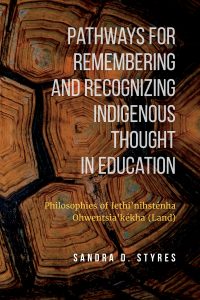 Professor Sandra Styres’ Pathways for Remembering and Recognizing Indigenous Thought in Education: Philosophies of Iethi’nihsténha Ohwentsia’kékha (Land) speaks to the ways that Indigenous traditional pedagogy and relationship to the Land informs Indigenous educational philosophy. By recognizing and engaging with the many ways that colonialism is reinforced in classrooms through the current education system, Styres works to offer a new, more inclusive philosophy that is guided by Indigenous pedagogy. This book works as a great aid to understand and conceptualize Indigenous educational philosophies that would help to disrupt the colonial power relations that are so present in schools today.
Professor Sandra Styres’ Pathways for Remembering and Recognizing Indigenous Thought in Education: Philosophies of Iethi’nihsténha Ohwentsia’kékha (Land) speaks to the ways that Indigenous traditional pedagogy and relationship to the Land informs Indigenous educational philosophy. By recognizing and engaging with the many ways that colonialism is reinforced in classrooms through the current education system, Styres works to offer a new, more inclusive philosophy that is guided by Indigenous pedagogy. This book works as a great aid to understand and conceptualize Indigenous educational philosophies that would help to disrupt the colonial power relations that are so present in schools today.
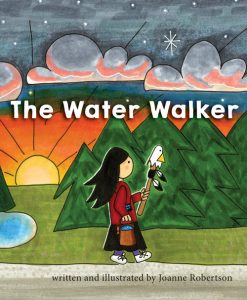 The Water Walker by Joanne Robertson is a brightly illustrated picture book that
The Water Walker by Joanne Robertson is a brightly illustrated picture book that
explores the deep love that Josephine Mandamin, an Ojibwe Nokomis (Grandmother), has for Nibi (Water). This story follows Nokomis as she walks around the Great Lakes in order to raise awareness of the importance of Nibi for future generations and the need to protect such a vital resource of life and knowledge. By providing a glossary and pronunciation guide to Anishinaabemowin words, The Water Walker acts as a great resource for teaching children the importance of the environment and the many ways they can in turn care for the Nibi surrounding them.
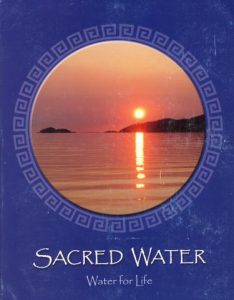 Acting as an environmental and cultural resource to Anishinaabe teachings, Sacred Water: Water for Life by Lea Foushee and Renee Gurneau is a resource filled with knowledge from Anishinaabe Elders and the language they use to transmit this knowledge. Sacred Water is a resource that educates students on the importance of environmental knowledge and stewardship, and of the many ways that our relationship with the Land affects our daily lives. With the inclusion of a reading list, student questions and suggested activities, this resource is an excellent tool for the implementation of Land-based education in the classroom.
Acting as an environmental and cultural resource to Anishinaabe teachings, Sacred Water: Water for Life by Lea Foushee and Renee Gurneau is a resource filled with knowledge from Anishinaabe Elders and the language they use to transmit this knowledge. Sacred Water is a resource that educates students on the importance of environmental knowledge and stewardship, and of the many ways that our relationship with the Land affects our daily lives. With the inclusion of a reading list, student questions and suggested activities, this resource is an excellent tool for the implementation of Land-based education in the classroom.
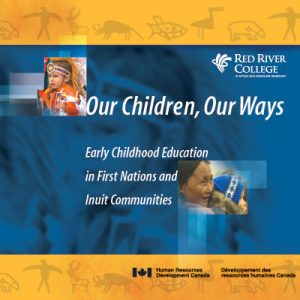 The footage captured in Our Children, Our Ways: Early Childhood Education in First Nations & Inuit Communities explores Indigenous programs across Turtle Island that are geared towards educating and empowering Indigenous students. This film helps to promote and celebrate the culture of the communities involved, including the varying ways that the children of those communities are educated. Our Children, Our ways demonstrates the ways that Indigenous children learn from Land-based pedagogy by emphasizing the learning that occurs through the interaction with their culture, language, family, and Land. As a film dedicated to the importance of Land and the engagement with outdoor activities in the upbringing and education of children, this resource is a useful guide when introducing Land-based education in the classroom. By encouraging students to learn from the Land, the methods and activities that are promoted within this video help to emphasize the importance of integrating lessons of the Land into the classroom.
The footage captured in Our Children, Our Ways: Early Childhood Education in First Nations & Inuit Communities explores Indigenous programs across Turtle Island that are geared towards educating and empowering Indigenous students. This film helps to promote and celebrate the culture of the communities involved, including the varying ways that the children of those communities are educated. Our Children, Our ways demonstrates the ways that Indigenous children learn from Land-based pedagogy by emphasizing the learning that occurs through the interaction with their culture, language, family, and Land. As a film dedicated to the importance of Land and the engagement with outdoor activities in the upbringing and education of children, this resource is a useful guide when introducing Land-based education in the classroom. By encouraging students to learn from the Land, the methods and activities that are promoted within this video help to emphasize the importance of integrating lessons of the Land into the classroom.
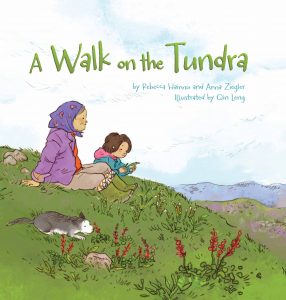 A Walk on the Tundra is a colourful yet informative children’s book that follows a little girl, Inuujaq, and her grandmother in their travels across the tundra. Amongst their travels, Inuujaq learns from her grandmother the ways that the Land transforms throughout the seasons, and the many ways that the Land provides nourishment and life to other plants, animals and humans in one harmonious cycle. With a field guide that includes photographs and scientific information concerning the Arctic environment and its plants, A Walk on the Tundra acts as an excellent guide while teaching students the importance of the Land and the many ways they can learn from it.
A Walk on the Tundra is a colourful yet informative children’s book that follows a little girl, Inuujaq, and her grandmother in their travels across the tundra. Amongst their travels, Inuujaq learns from her grandmother the ways that the Land transforms throughout the seasons, and the many ways that the Land provides nourishment and life to other plants, animals and humans in one harmonious cycle. With a field guide that includes photographs and scientific information concerning the Arctic environment and its plants, A Walk on the Tundra acts as an excellent guide while teaching students the importance of the Land and the many ways they can learn from it.
For these and more books on Indigenous land-based education, visit the Lobby Display on the ground floor of the OISE Library. Please feel free to take out the materials found in the Display.
